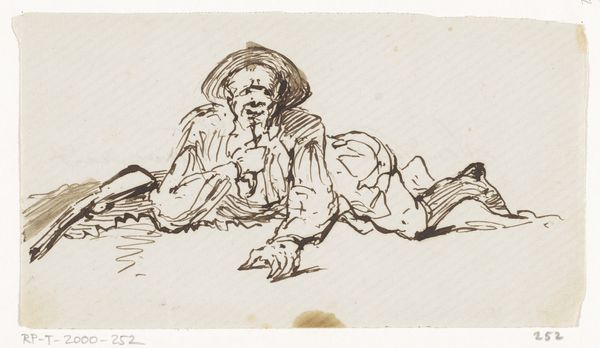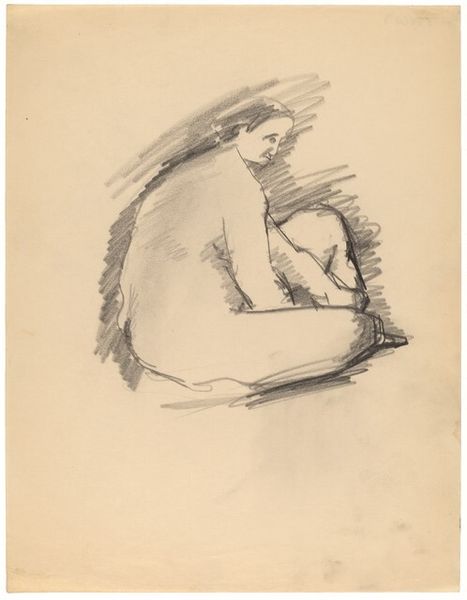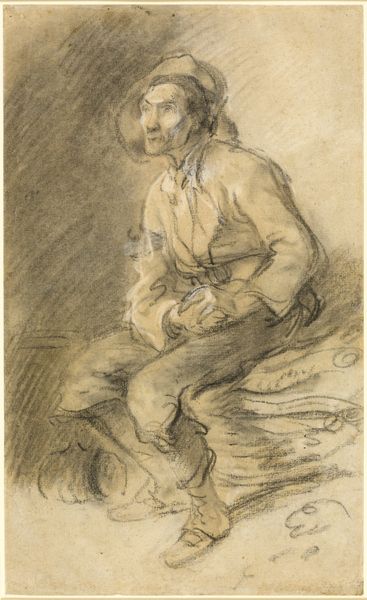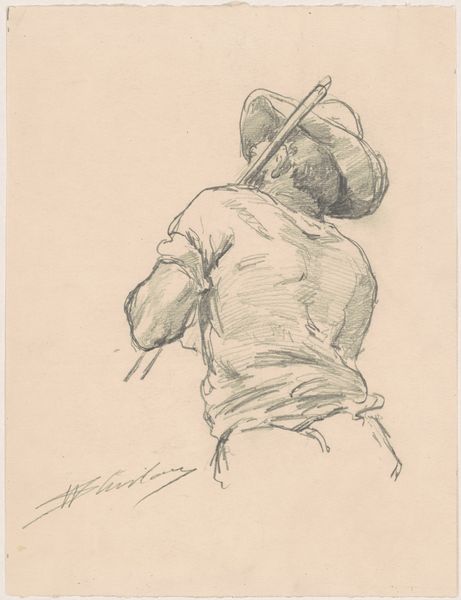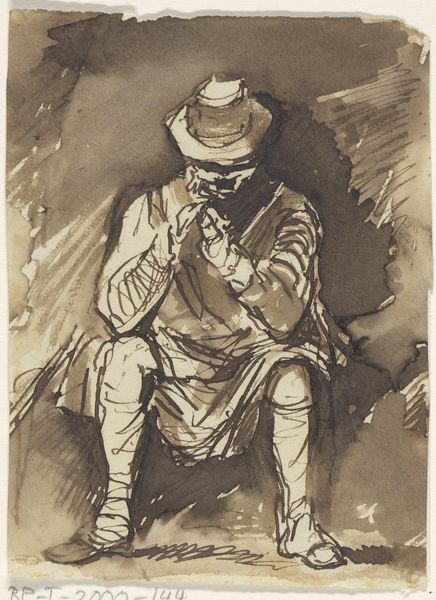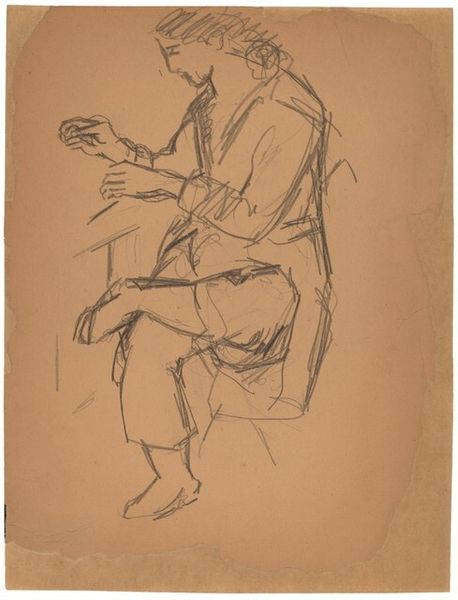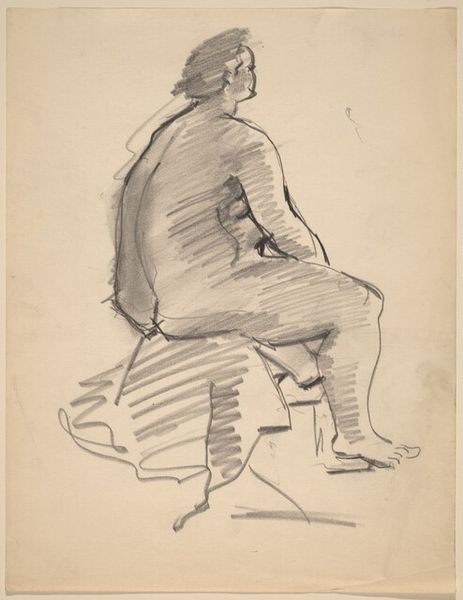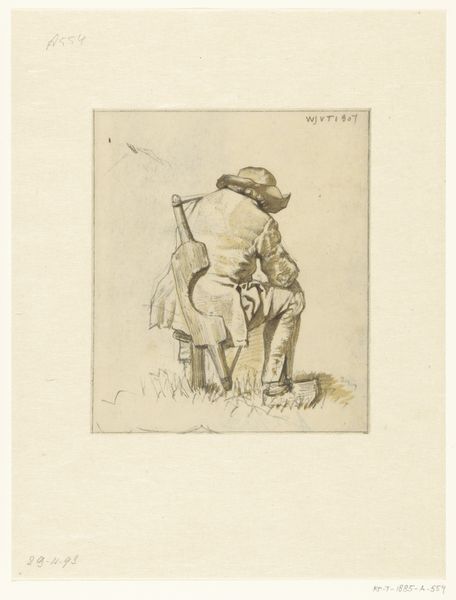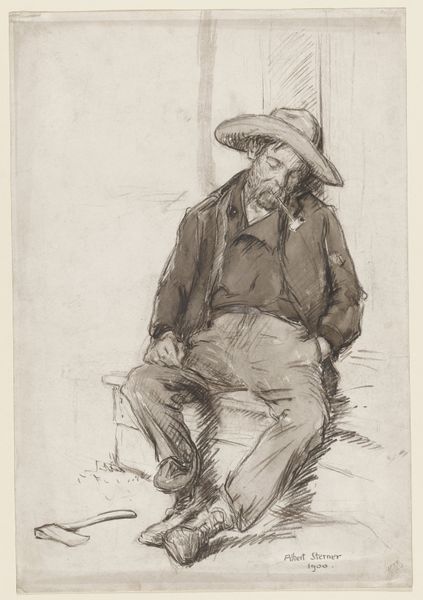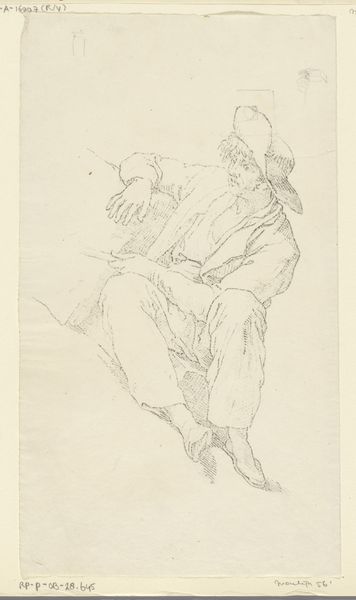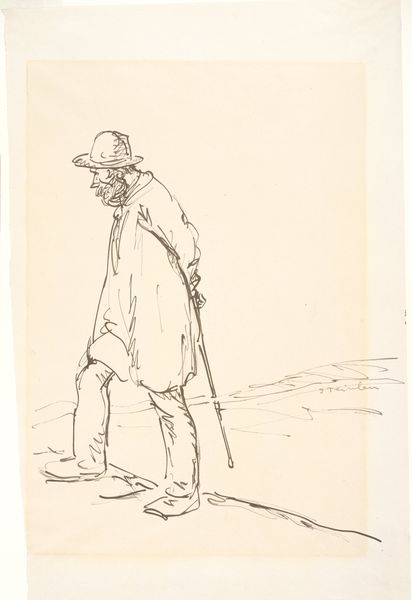
drawing, ink, pen
#
portrait
#
drawing
#
figuration
#
ink
#
pen
#
portrait drawing
#
realism
Dimensions: height 112 mm, width 93 mm
Copyright: Rijks Museum: Open Domain
Curator: Welcome. Here we have a work by Johannes Tavenraat, a drawing dating from approximately 1840 to 1880, titled "Houthakker" currently held in the collection of the Rijksmuseum. It is made with pen and ink. Editor: The overriding impression I get is of weariness. Look at how hunched over he is, almost fetal in his posture, as if shrinking away from the world. Curator: That resonates with how these types of studies often functioned within the larger context of 19th-century art and society. There was a growing interest in depicting laborers and everyday life, but also a desire to understand and categorize different social classes. Editor: Categorization might be part of it, but there is more here. Note the way Tavenraat uses quick, almost frantic pen strokes around the figure's form in contrast with broad washes creating depth. The figure becomes enveloped in the darkness that seems to rise off of him. Curator: Indeed, it’s less a celebration of labor and more a somber reflection on its burdens. These were complicated times. Industrialization was rapidly changing the social landscape, and artists were grappling with how to represent these shifts. Editor: See also the face—or lack thereof. It's completely obscured by the hat. His identity as an individual is lost, subsumed by his occupation, but more powerfully it lends a profound feeling of anonymity to his suffering. Curator: Anonymity certainly reflects the experiences of many who toiled in relative obscurity during this period. They were, after all, the backbone of a rapidly transforming economy. Drawings like this offered a glimpse into a world that was both essential and largely invisible to the wealthier classes. Editor: The raw economy of the marks themselves mimics that world: stripped down, and essential. This wasn't created for luxury or display; it's a study of form and darkness, and it gives voice to this faceless figure's mute resignation. Curator: It really speaks to the complex intersection of art and social observation. I see the "Houthakker" not merely as a portrait of a woodcutter, but as a reflection on the larger socio-economic forces shaping the Netherlands at that time. Editor: And to the artistic forces shaping his portrayal; I leave thinking of that delicate balance between form and subject—between a sensitive composition and the historical weight it carries.
Comments
No comments
Be the first to comment and join the conversation on the ultimate creative platform.

